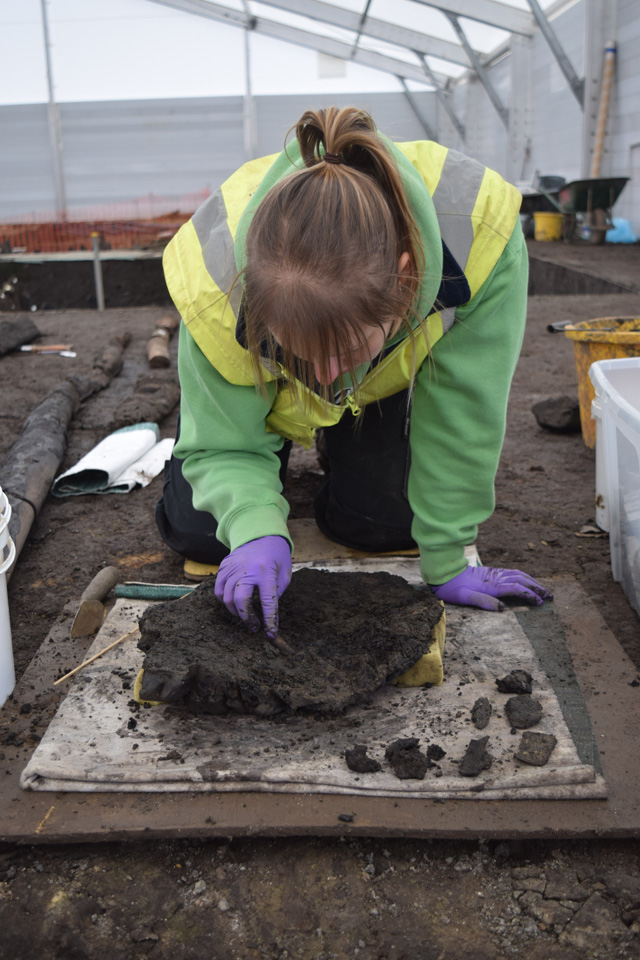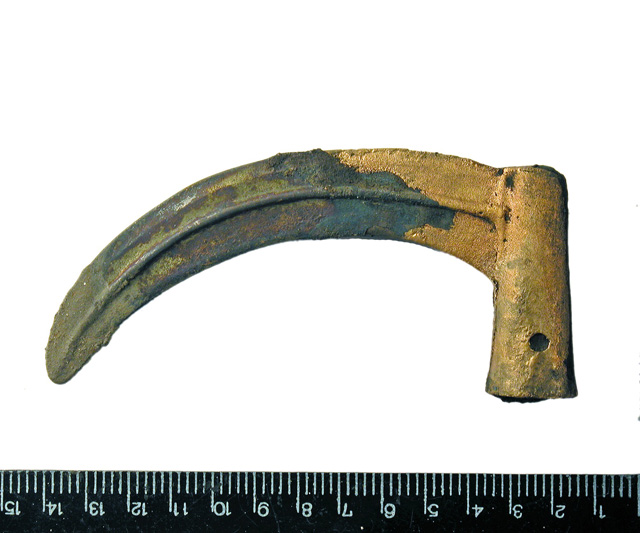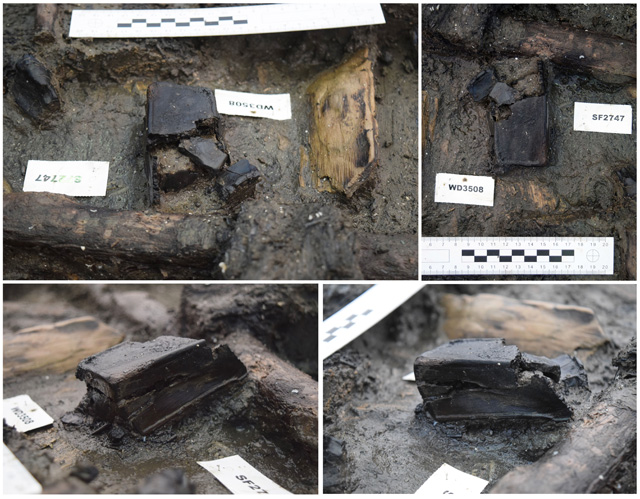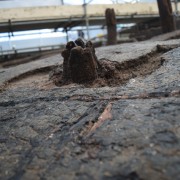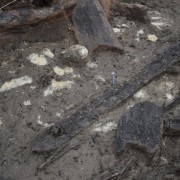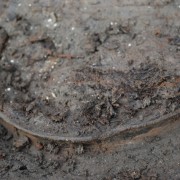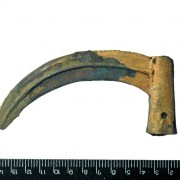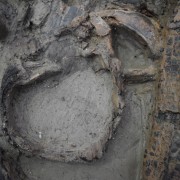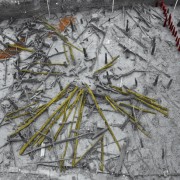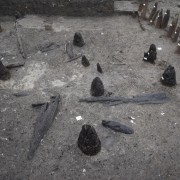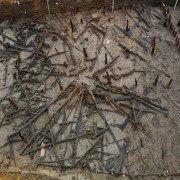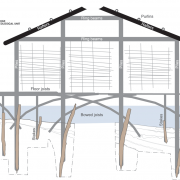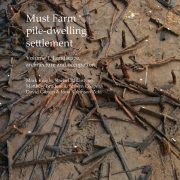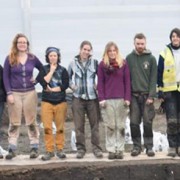Dig Diary 16: Earlier and Later Periods in the Fenland Basin
February 8, 2016
Looking at the Middle Bronze age and Early Iron Age
In previous weeks we have discussed how valuable it is to examine the Must Farm site while thinking about similar continental examples. It is equally important to consider the preceding and subsequent archaeological periods, in this case the Middle Bronze Age and Early Iron Age. Being aware of the archaeological practices and phenomena of these periods helps to highlight areas where continuity is visible. However, change and discontinuity are also critical aspects to helping further our knowledge of these periods both locally and nationally.
Throughout prehistory in Britain there is evidence of distinct regional variations during different periods. This is understandable given the wide range of environments present which means it is essential that archaeologists understand the regions they are working in. Must Farm sits within the Flag Fen basin, an area which is rich in prehistoric activity that is relatively well understood thanks to decades of excavation and research. So, what characterises the Middle Bronze Age and Early Iron Age in the Flag Fen basin and how do those characteristics relate to Must Farm? We wanted to give a brief introduction to these periods to give a better idea of where our site fits into prehistory.
Middle Bronze Age Fenland: c.1500 – 1100BC
The Middle Bronze Age ends just before the earliest dates from our settlement and has some very distinctive characteristics that help to define it. During this period the creation of large field systems occurs, predominantly in southern England. These field systems appear to be dividing land up, suggesting land tenure and ownership. Agriculture in this period is largely mixed with the dry areas of the Fens being dominated by cattle rearing. Large watering holes, for these herds of cows also begin to appear in the archaeological record.
In terms of burial, the Middle Bronze Age is characterised by cremation cemeteries with human remains being housed in distinctive urns. While death is usually visible, settlement is much more problematic to identify. Very occasionally we find small, round structures but our understanding of these buildings is limited.
During this period we see the beginnings of the deposition of bronze objects, particularly in rivers. Many of these bronze artefacts are weapons, predominantly swords which again are very diagnostic of the Middle Bronze Age. Pottery is coarse and vessels are all reminiscent of the burial urns used for cremations. There is no evidence of a wide variety and range of types of ceramic, such as bowls and cups.
Early Iron Age Fenland: 800 – 400AD
The beginning of the Early Iron Age ties in with the latest dates for the Must Farm site, the fire is thought to date to between 920 – 800BC. The Early Iron Age differs significantly from the Middle Bronze Age in a number of key areas. Field systems are no longer in use, there is no real sense of enclosure or the demarcation of land in the same way. Mixed agriculture is still being used and in the Fens there is still an emphasis on cattle.
Similarly, the burial record is very different. Gone are the distinct urn cremations of the middle Bronze Age. Instead, we struggle to find much evidence of burial practices. Where human remains are found, they tend to be fragmentary and are often tied up with domestic assemblages. The deposition of material in watery environments stops at the end of the Bronze Age and is not really replaced with a similar practice. Interestingly, Bronze is still used though for much more common, everyday tools rather than weapons.
Settlement is more easily identified and the beginnings of larger clusters of houses can be clearly seen within the archaeological record. The locations of these settlements are also interesting, people seem to have moved out of the wet, fenland environments common in the Later Bronzer Age and are now living on the higher, drier ground. The ceramic assemblage is much, much broader with bowls, jars, cups, storage vessels and finewares being found across Early Iron Age sites.
Must Farm and the Later Bronze Age
How does the later Bronze Age settlement at Must Farm relate to these adjacent periods? The later Bronze Age is a distinct entity in itself. While the site that we are looking at has similarities to both the preceding and subsequent periods, the Later Bronze Age has a very clear character to its archaeology. The location of the settlement in the Fens is quite characteristic, as during this period people began to move into largely unoccupied environments such as the watery river courses of fenland.
We know that cattle was an important element of both the economy and diet during the middle Bronze Age and the Early Iron Age. Looking at the faunal assemblage recovered during the 2006 evaluation, this looks to be true of our site in the Later Bronze Age. Even though the people living in the round houses at Must Farm had easy access to fish and wild fowl, it seems their diet still included lots of cattle, alongside pig and sheep.
The pottery from our site is also much more similar to the Early Iron Age than the very limited, basic ceramics from the Middle Bronze Age. The assemblage was very varied and the 2006 material showed what is thought to be a largely complete domestic collection of pottery. It ranged from the small, individual drinking vessels to larger cooking bowls. Finewares are also present with some beautiful designs, such as the distinctive poppy headed cup, similar to European examples.
One of the other key elements of the Later Bronze Age is an intensification of the deposition of metal objects, although this is yet to be very visible from our site. Most of the metalwork that has been recovered from the occupation deposits appears very domestic in character including items such as sickles and gouges.
As our excavation continues and we uncover more of the occupation deposits, alongside the wood mass’ structural components, we will have much more of an idea of the character of the archaeology. How do the artefacts themselves and the other material culture (such as animal bone and environmental data) fit into our understanding of the Later Bronze Age? Is the settlement at Must Farm representative of a fenland Later Bronze Age site, or potentially even one from elsewhere in Britain? Can we make comparisons with sites of the same period elsewhere in Europe?
An archaeological project is always a combination of hundreds, if not thousands, of questions that we are keen to answer. The majority of them are relatively small, relating to the specifics of excavation or stratigraphy. However, there are always bigger questions that are much harder to answer. These are questions that require considering the wider context and surrounding archaeological periods. This blog has only been the briefest of introductions to enormous periods of prehistory. However, we hope it places Must Farm and its archaeology in a little bit more context and how the completeness of the site can help us understand much more than this one location.
Related stories
Dig Diary 19: Discovering Britain’s Oldest, Complete Wheel
February 29, 2016
Dig Diary 18: Looking Inside and Outside Roundhouse One
February 22, 2016
Dig Diary 17: Formality and the Must Farm Settlement
February 15, 2016
Dig Diary 16: Earlier and Later Periods in the Fenland Basin
February 8, 2016
Dig Diary 15: Exploring the Occupation Deposit
February 1, 2016
Dig Diary 14: Excavating our Structures
January 25, 2016
Dig Diary 13: Exploring Our Earlier Oak Post Alignment
January 18, 2016
Dig Diary 12: Discovering Our First House
January 11, 2016
Learn more
About
The Must Farm pile-dwelling settlement was excavated by the Cambridge Archaeological Unit with funding from Historic England and Forterra.Publications
Read the Open Access publications the Must Farm pile-dwelling settlement: Volume 1. Landscape, architecture and occupation and Volume 2. Specialist reports.Post-Ex Diaries
Our work on-site has finished but lots more investigation is taking place as we study both the material and the evidence we recovered. ...read more
Discoveries
See some of the discoveries from the Must Farm pile-dwelling settlement.
Making Must Farm
Find out about our work with AncientCraft recreating Must Farm’s material.
FAQs
Further information on the Must Farm project.

